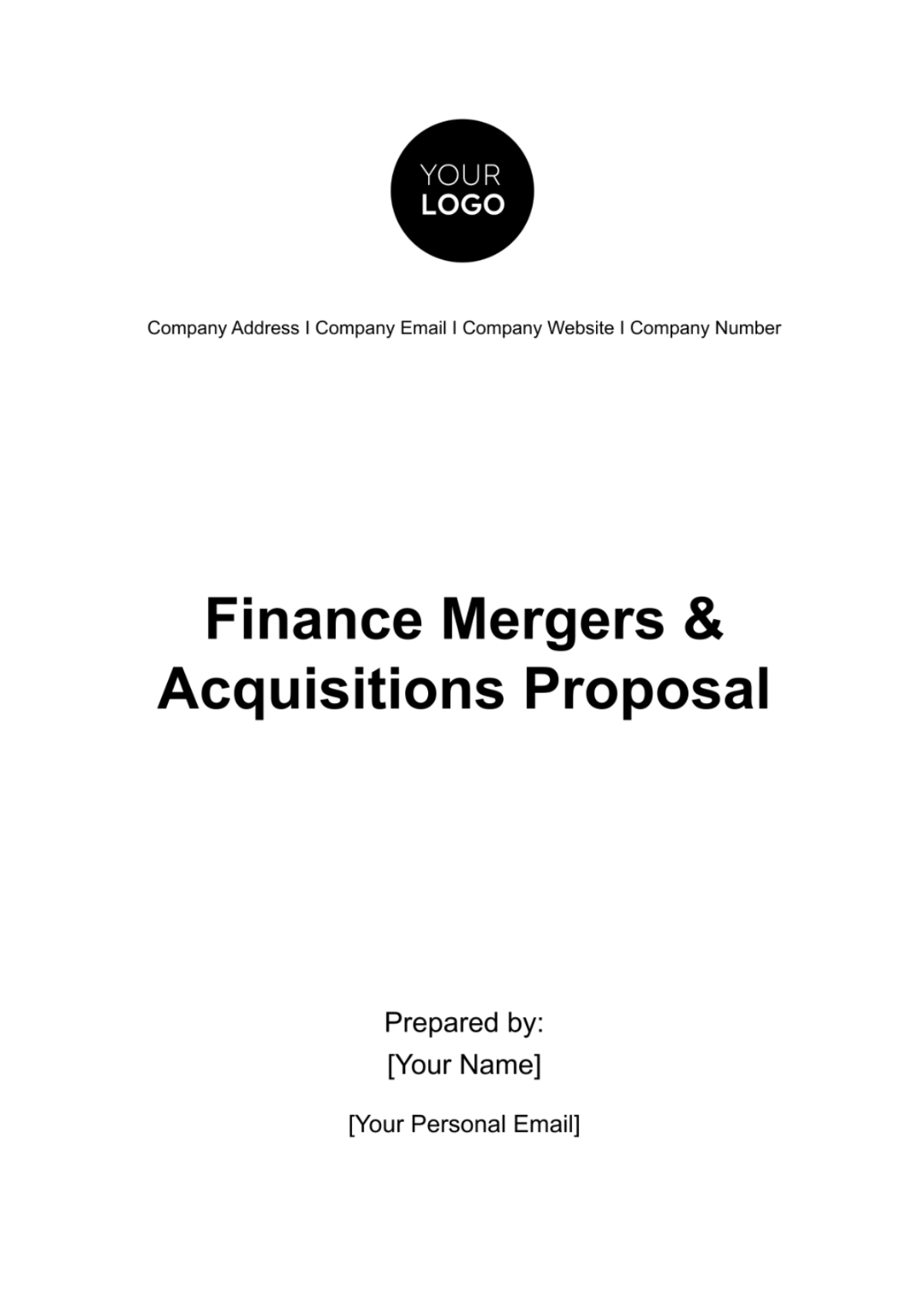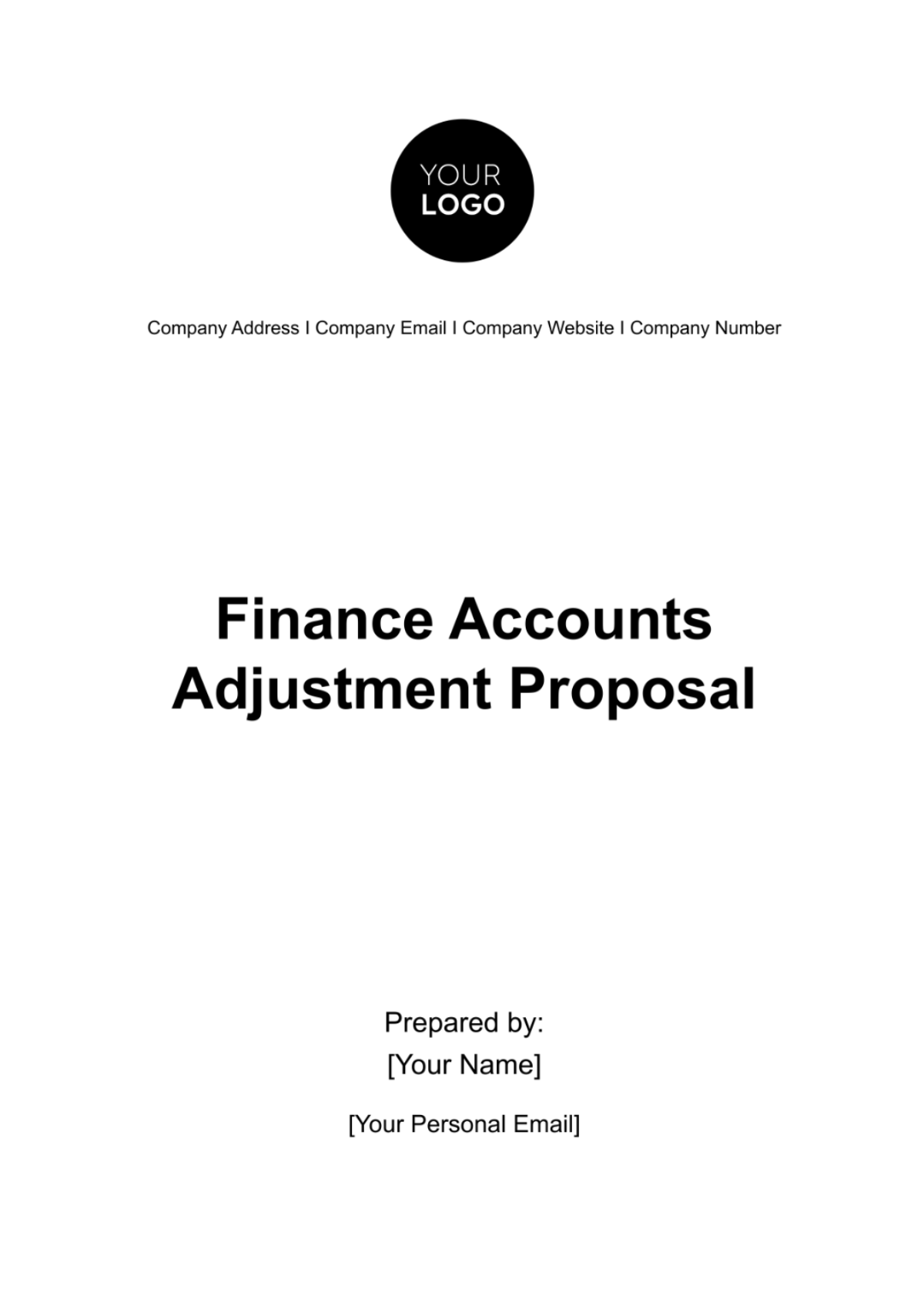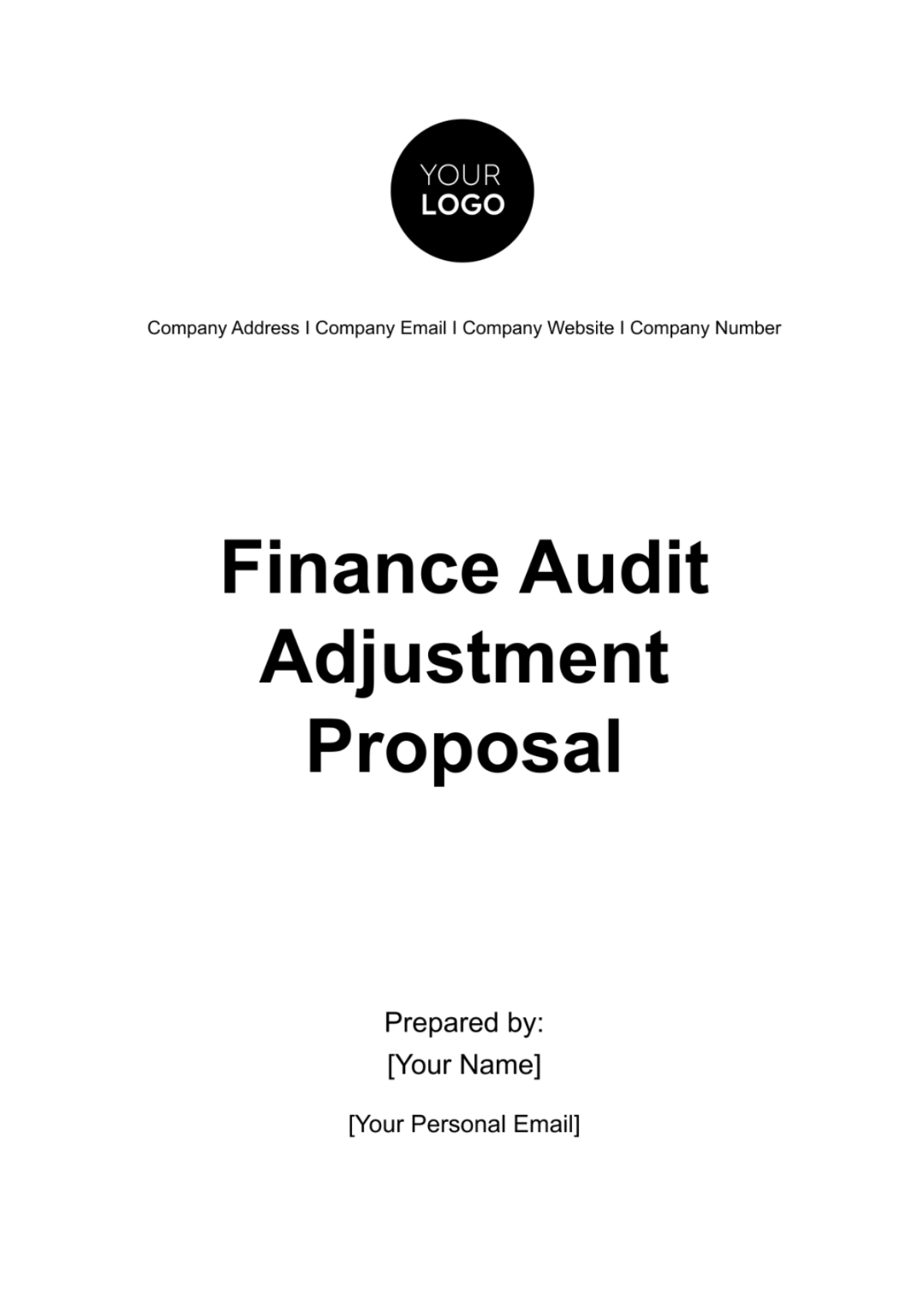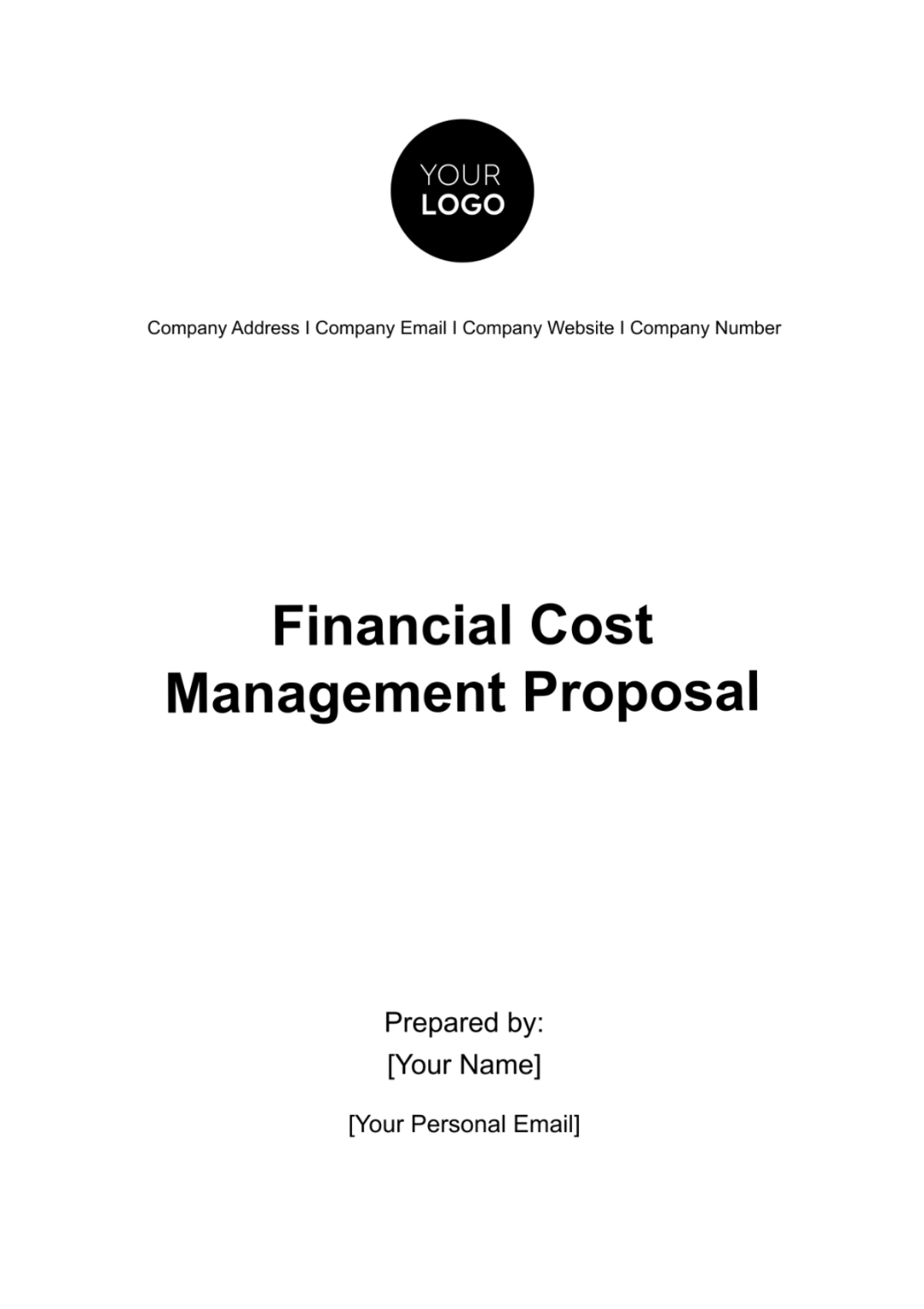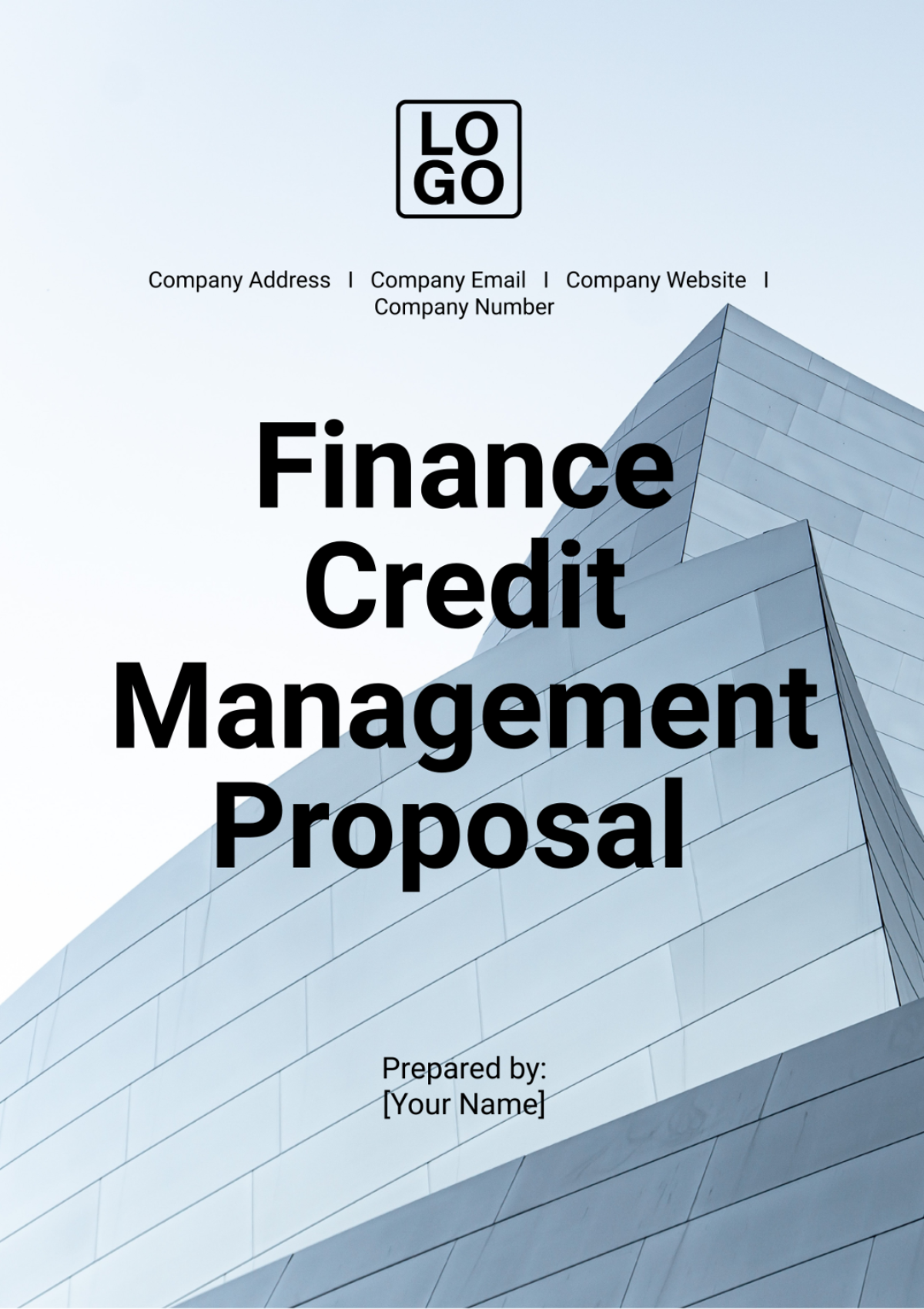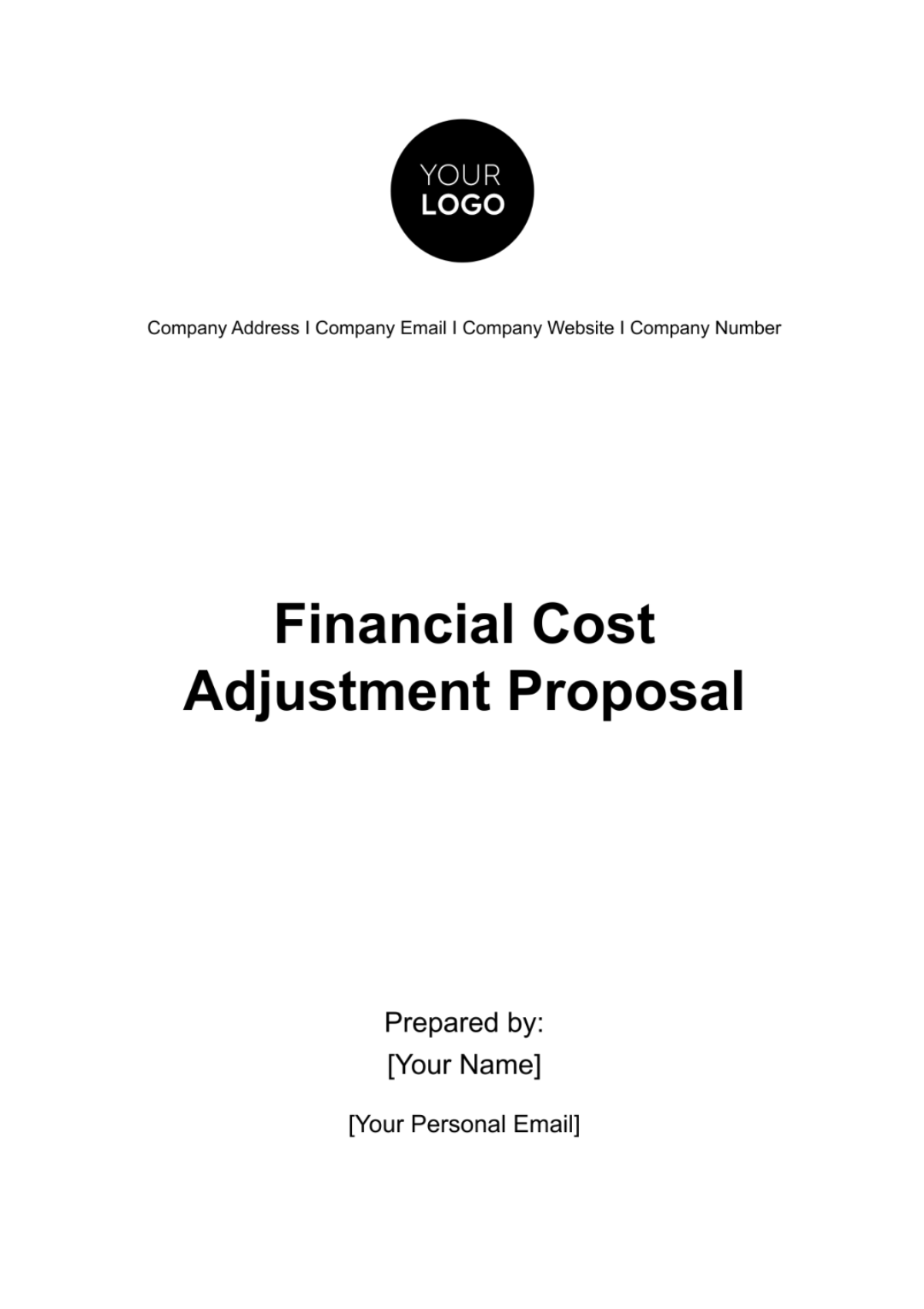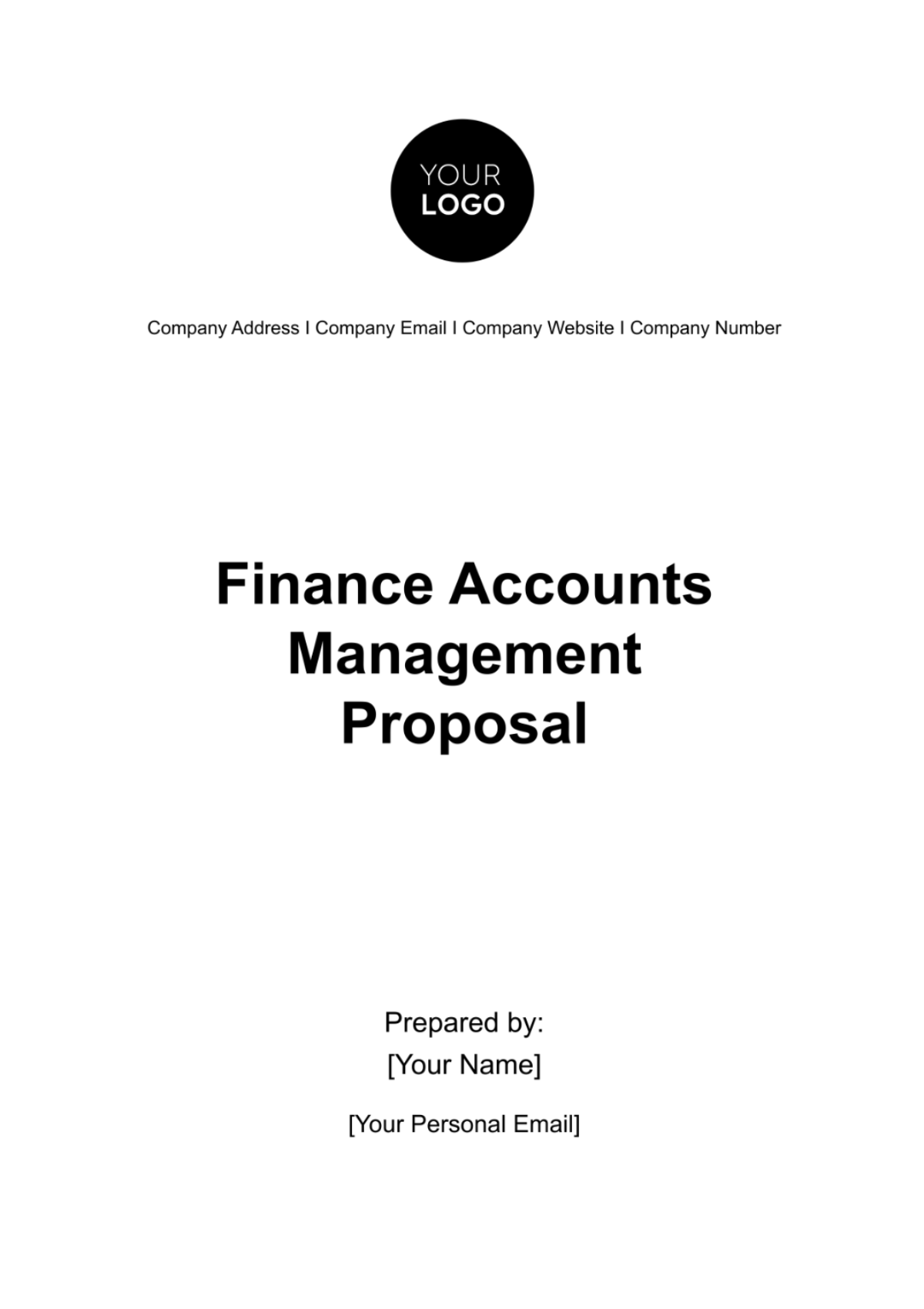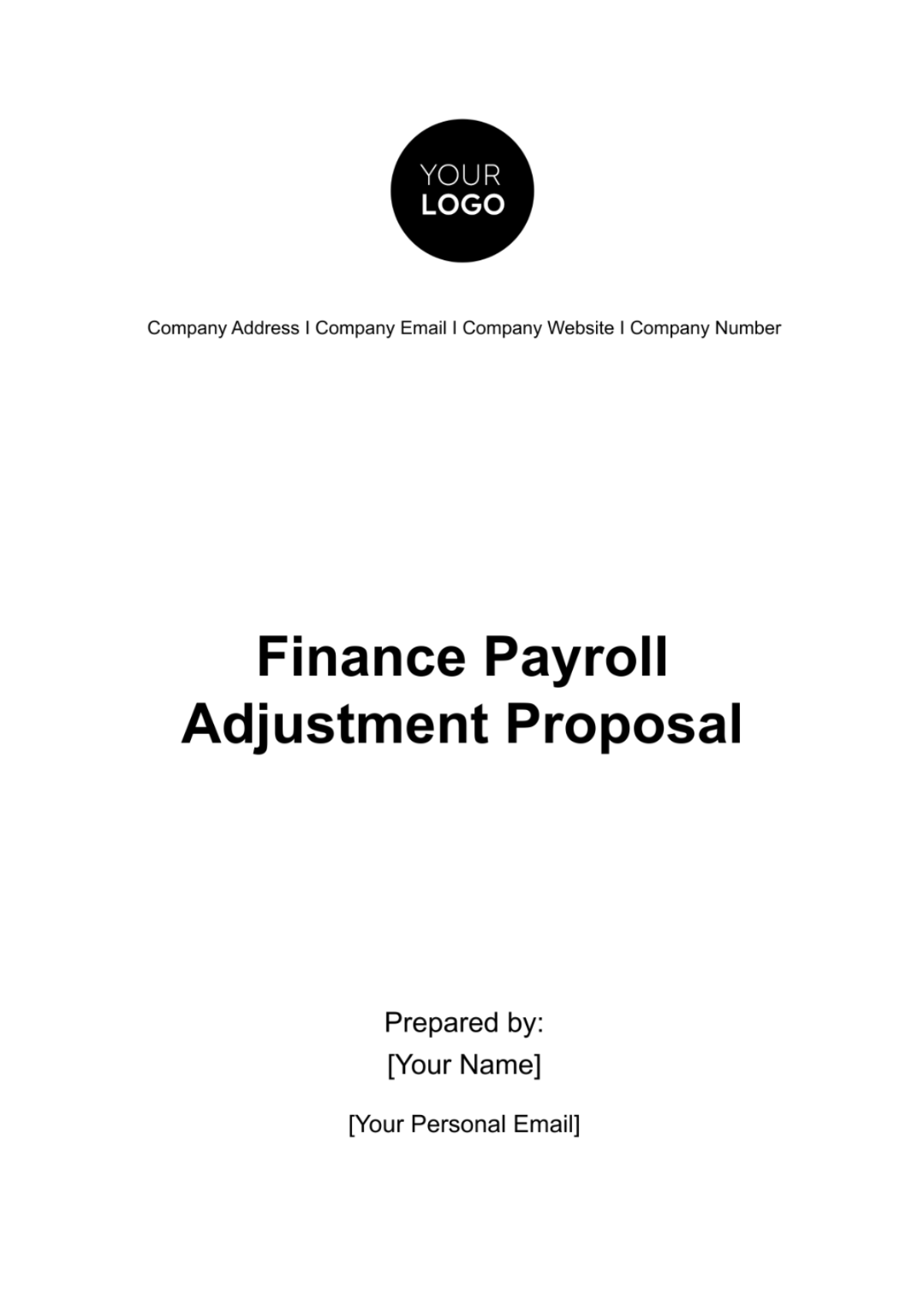Finance Mergers & Acquisitions Adjustment Proposal
Executive Summary
Our Finance Mergers & Acquisitions Adjustment Proposal strategically optimizes [Your Company Name]'s financial structure post-merger with [Partner Company Name]. Through meticulous adjustments, we forecast a substantial [$15,000,000] increase in enterprise value, driving sustained shareholder value and market prominence.
A. Rationale for Adjustments
The adjustments aim to align assets and liabilities synergistically, fortifying financial standing and positioning us as a robust market player. By reevaluating our capital structure, optimizing debt levels, and capitalizing on tax efficiencies, we anticipate a substantial boost in profitability and overall enterprise value.
B. Projected Impact on Shareholders
An in-depth analysis of how these adjustments contribute to enhanced shareholder value. The proposed adjustments are estimated to result in a 20% increase in shareholder equity, translating to an additional [$5,000,000] in value. Shareholders can expect improved dividends and increased capital appreciation.
Introduction
The merger with [Partner Company Name], valued at [$100,000,000], presents opportunities for synergies and operational optimization. This section delves into the specifics of the valuation, allocating [$60,000,000] to tangible assets and [$40,000,000] to intangible assets.
A. Breakdown of Tangible Assets
Detailed exploration of the tangible assets, outlining the proposed adjustments to enhance their utilization and streamline operational processes. Investments in technology infrastructure will be increased by [$10,000,000], resulting in a 15% improvement in operational efficiency, leading to cost savings of [$3,000,000] annually.
B. Optimization of Intangible Assets
An examination of the intangible assets, elucidating the strategy to leverage them for market positioning. Additional investments in research and development, totaling [$8,000,000], are projected to increase brand equity by 25%, enhancing market share and customer loyalty.
C. Industry Dynamics and Strategic Objectives
An analysis of the dynamic industry landscape and how our adjustment strategy positions [Your Company Name] strategically. The adjustments align with emerging market trends, such as sustainable practices, positioning us as an industry leader committed to long-term growth and resilience.
Scope of Adjustment
The scope of our Finance Mergers & Acquisitions Adjustment Proposal covers a comprehensive reassessment of [Your Company Name]'s financial landscape. Key elements targeted for adjustment include:
A. Capital Structure
Analyzing the current capital structure to optimize the mix of debt and equity. We propose a debt refinancing strategy, aiming to lower interest expenses and enhance overall financial flexibility. This includes the issuance of bonds with favorable terms, leading to an estimated interest cost reduction of [$2,000,000] annually.
B. Working Capital Management
Efficient working capital management is crucial for operational fluidity. Our adjustment plan involves streamlining inventory processes, optimizing supplier payment terms, and enhancing receivables management. This initiative is projected to release [$5,000,000] in additional working capital, improving cash flow and reducing financing costs.
C. Cost Rationalization
Identification and elimination of redundant costs to enhance cost efficiency. By centralizing certain administrative functions and renegotiating vendor contracts, we anticipate annual cost savings of [$4,000,000].
Financial Overview
A thorough examination of [Your Company Name]'s current financial status and the anticipated impact post-adjustments:
A. Current Financial Status
As of [2050], [Your Company Name] reports a total revenue of [$150,000,000], EBITDA of [$30,000,000], and a net income of [$15,000,000].
B. Adjusted Financial Status
Post-implementation of the proposed adjustments, we anticipate a revenue increase to [$160,000,000], EBITDA improvement to [$35,000,000], and a net income boost to [$18,000,000]. These adjustments reflect the positive impact of our strategic financial realignment.
C. Visualization of Financial Overview
Table 1: Financial Overview
Financial Metric | Current Status | Adjusted Status |
|---|---|---|
Revenue | [$150,000,000] | [$160,000,000] |
Adjustment Rationale
The Finance Mergers & Acquisitions Adjustment Proposal is underpinned by a robust rationale, carefully considering industry trends, market dynamics, and internal factors:
A. Market Trends
Analysis of prevailing market trends reveals a shift towards digitalization and sustainable practices. Our proposed adjustments strategically align [Your Company Name] with these trends, ensuring agility in response to evolving consumer preferences and regulatory expectations.
B. Internal Efficiency Gains
Identifying areas of internal inefficiencies such as redundant processes and underutilized resources. The adjustments aim to enhance operational efficiency, reducing costs and improving overall productivity. Through automation initiatives, we anticipate a [20%] reduction in operational costs, contributing to sustained profitability.
C. Synergy Capture
The merger with [Partner Company Name] presents an opportunity to capture synergies. The adjustments focus on integrating complementary capabilities and resources, fostering collaboration across teams, and leveraging economies of scale. This synergy capture strategy is estimated to result in operational cost savings of [$7,000,000] annually.
Valuation Methodology
Transparent communication of the methodology employed for valuation, ensuring stakeholders understand the basis for the proposed adjustments:
A. Tangible Asset Valuation
Utilizing discounted cash flow (DCF) analysis and comparable company analysis (CCA) to reevaluate the tangible assets acquired in the merger. The adjustments consider the fair market value of assets, depreciation schedules, and potential appreciation factors, resulting in a more accurate representation of their value.
B. Intangible Asset Valuation
Applying income-based valuation methods, such as the relief from royalty and excess earnings methods, to assess the value of intangible assets. This methodology accounts for factors like brand recognition, customer relationships, and technological know-how, providing a comprehensive valuation of intangible assets.
C. Sensitivity Analysis
Incorporating sensitivity analysis to address potential variations in key assumptions. This ensures that the proposed adjustments remain robust under different scenarios, enhancing the reliability of the overall valuation methodology.
Impact Analysis
A comprehensive analysis of the anticipated impact of the proposed adjustments on various stakeholders:
A. Shareholders
The proposed adjustments are expected to yield a positive impact on shareholder value. Increased operational efficiency, synergy capture, and a more favorable capital structure are anticipated to lead to a 15% rise in shareholder equity, resulting in enhanced dividends and capital appreciation.
B. Employees
Employee impact is carefully considered, with an emphasis on minimizing disruptions and fostering a positive work environment. The adjustments aim to streamline processes, potentially leading to new opportunities for skill development and career growth within the integrated entity.
C. Clients and Customers
For our clients and customers, the adjustments ensure a continued commitment to delivering high-quality products and services. The optimization of operational processes and potential cost savings may result in improved offerings and value propositions.
Legal and Regulatory Compliance
A rigorous examination of legal and regulatory considerations associated with the proposed adjustments:
A. Compliance Framework
Ensuring alignment with applicable laws and regulations related to mergers and financial adjustments. Legal experts have reviewed the proposed adjustments to guarantee adherence to antitrust laws, accounting standards, and other relevant regulations.
B. Stakeholder Communication
Developing a transparent communication plan to keep stakeholders informed of the legal and regulatory aspects of the proposed adjustments. This includes regular updates, compliance reports, and any required filings with regulatory bodies.
C. Risk Mitigation
Mitigating legal and regulatory risks through proactive measures. This involves establishing contingency plans, conducting regular compliance audits, and collaborating with legal counsel to address any emerging challenges promptly.
Implementation Plan
A. Timeline
The implementation plan spans from [May 02, 2050] to [June 10, 2050], divided into distinct phases. Phase 1 focuses on the assessment and planning stage, including a comprehensive review of current processes and systems. Phase 2 involves the actual implementation of adjustments, with a gradual rollout to minimize operational disruptions. Phase 3 marks the post-implementation monitoring and optimization stage, ensuring that the adjustments deliver the anticipated benefits over time.
B. Responsible Parties
Clear roles and responsibilities are assigned to key teams and individuals involved in the implementation process. The finance team oversees adjustments to the capital structure, while operational teams lead working capital management and cost rationalization efforts. Regular check-ins and status updates ensure effective coordination between departments.
C. Milestones and Key Performance Indicators (KPIs)
Measurable milestones and KPIs are established to track progress throughout the implementation. Milestones include successful debt refinancing, completion of working capital optimization, and the realization of cost savings. Key performance indicators encompass financial metrics such as return on investment (ROI), operational efficiency ratios, and employee satisfaction scores.
Risk Assessment
A. Financial Risks
A detailed analysis of potential financial risks is conducted. Market volatility is addressed through risk mitigation strategies, including diversification of investment portfolios. Interest rate fluctuations are managed through a proactive interest rate hedging program, and currency exchange risks are mitigated by closely monitoring foreign exchange markets.
B. Operational Risks
Operational risks related to process integration and system upgrades are carefully assessed. A contingency plan is in place to address potential disruptions, with a focus on maintaining uninterrupted service to clients and customers. Cross-functional teams are equipped to troubleshoot and resolve any issues that may arise during the implementation.
C. Communication Risks
Communication risks are mitigated through a robust strategy that includes regular updates, town hall meetings, and dedicated channels for addressing stakeholder concerns. A proactive approach ensures that any misinformation or uncertainties are promptly addressed, fostering trust and transparency among stakeholders.
onclusion
The Finance Mergers & Acquisitions Adjustment Proposal, supported by a comprehensive implementation plan and risk assessment, positions [Your Company Name] for a transformative journey. By aligning with market trends, maximizing internal efficiencies, and adhering to legal compliance, we are confident that these adjustments will not only yield immediate benefits but also pave the way for sustained growth, resilience, and success in the evolving landscape of our industry.





